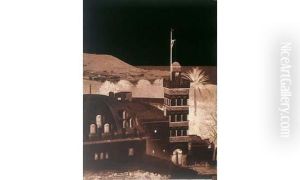Gustave De Beaucorps Paintings
Gustave De Beaucorps was a French photographer born in 1825, who played a significant role in the development and popularization of early photography. His work is not as widely known as some of his contemporaries, but he made important contributions to the field, especially through his travel photography.
Gustave De Beaucorps began his career as a photographer in the mid-19th century, a time when photography was still in its infancy and was being explored by many as both a scientific endeavor and an art form. He was particularly interested in using photography to document his travels and the cultures he encountered. His travels took him to various locations including Spain, North Africa, and Asia, where he captured a range of subjects from landscapes and architectural studies to portraits of local inhabitants.
De Beaucorps' photography is characterized by its clarity, attention to detail, and composition. He worked primarily with paper negatives, also known as calotypes, which were the leading technology before the advent of glass plate negatives. His images provide valuable insights into the regions he visited, many of which were undergoing significant changes during the 19th century. His photographs are not only important documents from a historical perspective but are also appreciated for their aesthetic qualities.
Unfortunately, De Beaucorps did not gain the same level of fame as some of his peers like Nadar or Gustave Le Gray. Nevertheless, his work has been recognized posthumously, and original prints of his photographs are now valuable collectors' items that can be found in museums and private collections around the world. He continued to work until his death in 1906, leaving behind a legacy as a pioneer in travel photography and an important figure in the early days of the medium.


